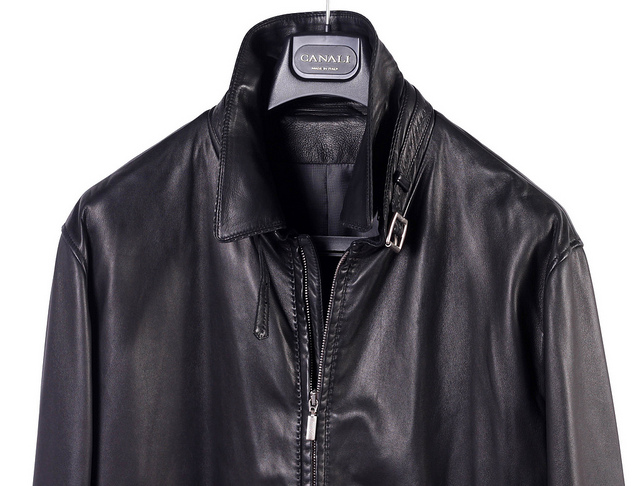Yes, leather jackets can keep you warm as the dense and sturdy leather material effectively blocks cold winds, keeping you protected from the wind chill factor. However, compared to other fabrics, leather jackets often do not offer much insulation or breathability, which might cause them to feel less warm.
It’s important to note that leather jackets may not be warm enough in extremely cold weather conditions and may need additional layers for warmth. Leather jackets have been a staple in fashion for decades and are often associated with a cool and edgy look.
But one question that arises when it comes to leather jackets is whether they can keep you warm in cold weather. While leather jackets are not typically designed for extreme cold weather conditions, they can offer some level of warmth due to the dense and sturdy leather material that effectively blocks cold winds. However, it’s important to note that compared to other fabrics, leather jackets often do not offer much insulation or breathability, which might cause them to feel less warm. We’ll explore whether leather jackets can keep you warm and offer some tips on how to make your leather jacket work in colder weather.
Introduction To Leather Jackets And Warmth
When it comes to staying warm in the chilly weather, leather jackets are a popular choice for many. But do leather jackets really keep you warm? Let’s delve into the qualities of leather jackets that affect their warmth and debunk some common misconceptions.
Leather Qualities Affecting Warmth
Leather jackets vary in warmth based on the type of leather they are made from. Full grain leather is the thickest and most durable, providing excellent insulation against the cold. On the other hand, top grain leather, while still of high quality, may not offer the same level of warmth. Additionally, the lining of a leather jacket also plays a crucial role in its warmth. A thick, quilted lining can significantly enhance the jacket’s ability to keep you cozy in cooler temperatures.
Common Misconceptions
One common misconception is that leather jackets are not suitable for winter. However, the dense and sturdy nature of full grain leather effectively blocks cold winds, keeping you protected from the wind chill factor. This makes leather jackets an excellent choice for those blustery, cold days when staying warm is a priority. Another misconception is that leather jackets always provide superior warmth compared to other fabrics. In reality, some leather jackets may not offer as much insulation or breathability, which can affect their warmth.

Credit: www.leathercult.com
Materials And Construction
When it comes to the warmth provided by leather jackets, the materials and construction play a crucial role. Understanding the types of leather used and the lining materials for insulation can help determine the jacket’s ability to keep you warm.
Types Of Leather Used
Leather jackets are commonly crafted using various types of leather, each with unique properties that affect warmth. Some of the most popular types of leather used for jackets include:
- Cowhide leather
- Goatskin leather
- Sheepskin leather
- Buffalo leather
Each type of leather differs in thickness, texture, and insulation capabilities, influencing the jacket’s overall warmth.
Lining Materials For Insulation
The insulation provided by leather jackets is often enhanced by the materials used in the lining. Common lining materials for insulation include:
- Thinsulate
- Quilted lining
- Faux fur
- Sherpa lining
These lining materials contribute to trapping body heat, thereby increasing the jacket’s warmth, especially in colder climates.
Leather Vs. Other Fabrics
Leather jackets can keep you warm, but they may not offer as much insulation as other fabrics. They are effective in blocking cold winds, making them a good choice for blustery, cold days. Adding a thin down shell or a cotton hoodie underneath can enhance the jacket’s warmth.
Comparison With Wool And Puffer Jackets
When it comes to staying warm in colder weather, choosing the right fabric for your jacket is crucial. Leather jackets offer a unique combination of style and functionality, but how do they compare to other fabrics like wool and puffer jackets? Let’s take a closer look.
Wool Jackets
Wool jackets are known for their excellent insulation properties. The natural fibers of wool trap air, creating a layer of warmth around your body. This makes wool jackets a popular choice for cold climates. However, wool jackets can be bulky and heavy, which may restrict movement and make them less practical for everyday wear.
Puffer Jackets
Puffer jackets, on the other hand, are lightweight and offer exceptional insulation. Filled with down feathers or synthetic materials, puffer jackets are designed to keep you warm even in freezing temperatures. They are known for their breathability and ability to retain heat effectively. However, they may not provide the same level of durability and style as leather jackets.
Breathability And Insulation
When it comes to breathability and insulation, leather jackets have their own unique advantages. Leather is a natural material that allows for some airflow, preventing you from overheating while still providing warmth. The dense and sturdy nature of leather also helps to block cold winds, keeping you protected from the wind chill factor.
On the other hand, leather jackets often do not offer as much insulation or breathability compared to fabrics like wool or puffer jackets. This is something to consider if you live in extremely cold climates or require maximum insulation.
In conclusion, while leather jackets may not provide the same level of insulation as wool or puffer jackets, they offer a stylish and durable option for staying warm. The choice ultimately depends on your personal preference, climate, and intended use. If you prioritize style and versatility, a leather jacket can be a great addition to your wardrobe.
Styling For Added Warmth
When it comes to staying warm during the colder months, leather jackets can be a stylish and practical choice. While leather itself provides some insulation, there are a few styling techniques you can employ to enhance the warmth of your jacket. From layering techniques to appropriate undergarments, here are some tips to keep you cozy and stylish in your leather jacket.
Layering Techniques
Layering is key when it comes to staying warm in any outfit, and leather jackets are no exception. By adding additional layers underneath your jacket, you can create a barrier of warmth that helps to trap heat and keep you comfortable even in chilly temperatures.
Here are a few layering techniques to consider:
- Start with a lightweight base layer, such as a long-sleeved thermal shirt or a thin merino wool sweater. These materials are known for their excellent insulation properties and can provide an extra layer of warmth without adding bulk.
- Add a mid-layer for added insulation. This can be a thicker sweater, a fleece jacket, or even a down vest. The key is to choose a layer that is not only warm but also lightweight and easy to move in.
- Finish off with your leather jacket as the outer layer. The leather will help to block cold winds and provide an additional layer of protection against the elements.
Appropriate Undergarments
Choosing the right undergarments can also make a significant difference in how warm you feel while wearing a leather jacket. By selecting appropriate undergarments, you can create an extra layer of insulation that keeps you cozy throughout the day.
Consider these undergarment options:
- Opt for thermal or moisture-wicking underwear. These materials are designed to trap heat close to your body and keep you dry, which is essential for staying warm in colder weather.
- Choose thick, woolen socks to keep your feet warm. Cold feet can quickly make the rest of your body feel chilly, so investing in high-quality socks is a must.
- Don’t forget about accessories like gloves, scarves, and hats. These can provide extra protection for your extremities and help to retain body heat.
By incorporating these layering techniques and selecting appropriate undergarments, you can maximize the warmth and comfort of your leather jacket. Remember to choose materials that are both insulating and breathable to ensure that you stay cozy without feeling overheated. With the right styling, your leather jacket can be a versatile and warm addition to your winter wardrobe.
Weather Suitability
Leather jackets can provide warmth in moderate cold weather, but they may not be sufficient in extreme temperatures. Layering with a thin down shell or a cotton hoodie can help enhance insulation and keep you warm underneath the jacket. Puffer jackets offer a unique combination of warmth and lightness compared to leather jackets.
Ideal Temperatures For Leather Jackets
Leather jackets are a timeless fashion piece that can be worn in various weather conditions. However, they are not suitable for extreme temperatures, such as extremely cold or hot weather. Leather jackets are best suited for moderate temperatures ranging from 50°F to 70°F. They are perfect for fall and spring seasons as they provide warmth without being too bulky.
Wind Resistance Features
One of the benefits of a leather jacket is its wind resistance feature. Leather is a dense and sturdy material that effectively blocks cold winds, keeping you protected from the wind chill factor. This feature makes leather jackets an excellent choice for those blustery, cold days when staying warm is a priority.
In conclusion, leather jackets are suitable for moderate temperatures, and they provide excellent wind resistance features. However, if you plan to wear a leather jacket in extremely cold temperatures, it is recommended that you layer up with warm clothing underneath. A thin down shell or a cotton hoodie will make up for any insulation the coat lacks, while giving you a couple of extra pockets to work with. Make sure both layers are about the same length so you’re not adjusting things every two minutes.
Leather Jackets In Extreme Cold
Leather jackets can provide some warmth in extreme cold, but they may not be as effective as other winter coats. While they offer some protection against the wind, they may not provide enough insulation in very low temperatures. Layering with a thin down shell or a cotton hoodie can help to enhance their warmth.
Limitations In Frigid Temperatures
Leather jackets are a timeless fashion staple that can add an extra edge to any outfit. However, when it comes to keeping you warm in extreme cold, leather jackets may not be the most practical option.
Leather jackets are made from animal skin, which is not an insulating material. This means that on their own, leather jackets may not provide sufficient warmth in frigid temperatures. In fact, if you’re heading out in below freezing temperatures, a leather jacket may even make you feel colder due to the lack of insulation.
Supplementing With Additional Gear
If you’re determined to wear your leather jacket in extreme cold, supplementing with additional gear is key. Layering is essential in keeping you warm and comfortable, so consider wearing a thick sweater or thermal shirt underneath your leather jacket.
You can also add extra insulation by wearing a down vest or coat on top of your leather jacket. This will help to trap in heat and keep you feeling cozy. Don’t forget to wear a warm hat, gloves, and scarf to protect your extremities from the cold.
In conclusion, while leather jackets can be a stylish addition to your wardrobe, they may not be the best option for keeping you warm in extreme cold. However, by supplementing with additional gear, you can still rock your favorite leather jacket while staying warm and comfortable. Remember to layer up, wear warm accessories, and stay safe in frigid temperatures.
Care And Maintenance
Leather jackets are not designed to provide significant warmth in extremely cold temperatures. While they can offer some insulation against the wind, it is recommended to layer them with a thin down shell or a cotton hoodie for added warmth.
Preserving Leather’s Insulating Properties
Proper care and maintenance of your leather jacket are essential to preserve its insulating properties and ensure that it keeps you warm for years to come. Here are some tips to help you maintain the insulating qualities of your leather jacket:
- Keep your leather jacket clean by wiping it with a soft cloth regularly. This will remove any dirt or dust that can clog the pores of the leather, affecting its ability to insulate.
- Apply a leather conditioner or moisturizer to keep the leather supple and prevent it from drying out. Dry leather can become stiff and lose its insulating properties.
- Avoid exposing your leather jacket to excessive heat or direct sunlight, as this can damage the leather and cause it to lose its insulation. Store it in a cool, dry place when not in use.
- Avoid getting your leather jacket wet. If it does get wet, allow it to air dry naturally. Do not use a hairdryer or any other heat source to speed up the drying process, as this can damage the leather.
Seasonal Storage Tips
When storing your leather jacket during the off-season, follow these tips to ensure its longevity:
- Clean your leather jacket thoroughly before storing it. Remove any stains or spills using a leather cleaner specifically designed for this purpose.
- Apply a leather conditioner to keep the leather moisturized and prevent it from drying out while in storage.
- Store your leather jacket in a breathable garment bag or cover it with a cotton sheet to protect it from dust and moisture.
- Avoid storing your leather jacket in plastic bags or containers, as they can trap moisture and cause the leather to mold or deteriorate.
- Choose a cool, dry place for storage, away from direct sunlight and extreme temperature changes.
By following these care and maintenance tips, you can ensure that your leather jacket retains its insulating properties and keeps you warm throughout the seasons.

Credit: www.leathercult.com
Real-life Applications
Leather jackets are not particularly known for their warmth, but they can provide some insulation against the cold. To enhance the warmth, layering with a thin down shell or a cotton hoodie underneath the jacket can make up for any insulation the coat lacks.
Motorcycle Riding In Cold Weather
One of the real-life applications where leather jackets truly shine is motorcycle riding in cold weather. Leather jackets are known for their ability to provide excellent protection against the wind chill factor, making them a popular choice among riders. The dense and sturdy leather material, especially full grain leather, effectively blocks cold winds, keeping riders warm and comfortable during their journeys. Whether you’re cruising on the highway or navigating through urban streets, a leather jacket is a reliable companion that keeps you warm while adding a touch of style to your ride.
Urban Vs. Rural Use
When it comes to choosing a leather jacket for warmth, it’s essential to consider the specific environment you’ll be using it in. Leather jackets are versatile garments that can be suitable for both urban and rural use, but there are some factors to keep in mind.
In urban areas, where buildings and structures can provide some level of protection against the elements, a leather jacket can be a great choice. The wind-blocking properties of leather help to keep you warm, even in bustling city streets where the wind can be harsh. Additionally, the stylish and timeless appeal of leather jackets makes them a fashionable choice for urban dwellers.
On the other hand, for those venturing into rural or outdoor environments, the functionality of a leather jacket becomes even more apparent. The durability and ruggedness of leather make it suitable for outdoor activities such as hiking, camping, or exploring nature. Leather jackets can withstand rough conditions and provide insulation against cold temperatures, allowing you to stay warm and protected while enjoying the great outdoors.
Whether you’re a motorcycle enthusiast braving the cold weather or an urban or rural explorer seeking warmth and style, leather jackets prove to be a practical and fashionable choice. With their ability to block cold winds and provide insulation, leather jackets keep you warm in various real-life applications.
Frequently Asked Questions
Are Leather Jackets Good For Warmth?
Yes, leather jackets can provide warmth due to their dense and sturdy material, especially full-grain leather. They effectively block cold winds, making them an excellent choice for blustery, cold days when staying warm is a priority. However, they may not offer as much insulation or breathability compared to other fabrics, which could make them feel less warm.
It’s also recommended to layer underneath for additional warmth.
What Temperature Is Good For A Leather Jacket?
A leather jacket is good for a temperature range of 50-70 degrees Fahrenheit. It provides insulation and protection from cold winds, making it suitable for chilly weather. However, it may not be sufficient in extremely cold temperatures without additional layers underneath.
What Do You Wear Under A Leather Jacket For Warmth?
Wear a thin down shell or a cotton hoodie under a leather jacket for extra warmth. Both layers should be similar in length for comfort.
Are Puffer Jackets Warmer Than Leather?
Puffer jackets are often warmer than leather jackets. They provide unique warmth and lightness, making them a great choice for cold weather.
Are Leather Jackets Warm Enough For Winter?
Leather jackets can provide warmth in mild winter temperatures, but may require layering in colder climates for adequate insulation.
Conclusion
Leather jackets can provide some level of warmth, especially in cold weather conditions. The dense and sturdy leather material effectively blocks cold winds, offering protection from wind chill factors. However, it’s important to note that leather jackets may not offer as much insulation or breathability compared to other fabrics.
Layering with a thin down shell or cotton hoodie can help enhance warmth. Ultimately, the level of warmth provided by a leather jacket will depend on various factors such as the quality of the jacket and the individual’s tolerance to cold temperatures.




